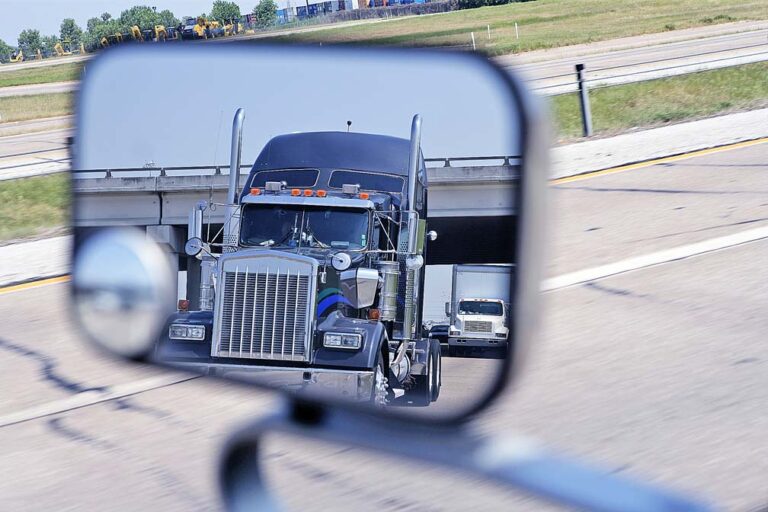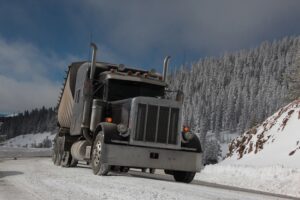WASHINGTON – The Federal Motor Carrier Safety Administration (FMCSA) has answered several comments filed as part of the public comment period for the new Safe Driver Apprenticeship Pilot (SDAP). The comment period ends on June 17. Click here to participate.
The SDAP will allow individuals between the ages of 18 and 20 to drive large trucks from state to state in what has become one of the most hotly debated issues in the trucking industry today.
According to current law, truck drivers must be at least 21 to cross state lines, but the new apprenticeship program will let 18- to 20-year-old truck drivers deliver goods outside their home states.
The apprenticeship pilot program was required by Congress as part of the infrastructure bill signed into law November 15, 2021. The U.S. Department of Transportation (DOT) offered full details of the pilot program in late January.
The program is regulated through the FMCSA, which will screen the teens to make sure they don’t have any driving-while-impaired violations or traffic tickets.
Under the apprenticeship program, younger drivers can cross state lines during 120-hour and 280-hour probationary periods — as long as an experienced CDL driver is in the passenger seat. Trucks used in the program must have an electronic braking crash-mitigation system and a forward-facing video camera, and their speeds must be limited to 65 mph.
Once these young drivers successfully complete the probationary periods, they will be allowed to cross state lines on their own — but their carriers must monitor their performance until they are 21. No more than 3,000 apprentices can take part in the training at any given time.
The FMCSA should reach out only to carriers with excellent safety records to take part in the program, according to the DOT.
The program will run for up to three years, and each participating motor carrier must turn in a report to Congress analyzing the safety record of the teen drivers and making a recommendation noting whether the younger drivers are as safe as those 21 or older. In the future, Congress could expand the program with new laws.
Of the 144 comments received, 134 comments were from individuals while 10 comments were from organizations, associations, or motor carriers.
A total of 31 comments supported the SDAP, which consisted of 25 individuals and 6 organizations, associations, or motor carriers.
A total of 102 comments were opposed to the SDAP, which consisted of 98 individuals and 4 organizations, associations, or motor carriers. The majority of these comments cited previous studies showing age as a factor in safe driving performance, concerns that drivers would not be compensated properly, or that the industry would “take advantage” of younger drivers.
A total of 11 comments, all from individuals, were neutral towards the SDAP. A sampling of comments is listed below.
RECOMMENDATION
Extend the probationary period to 6 months.
RESPONSE
While there is no prohibition toward individual carriers, or even individual drivers on a case-by-case basis having the probationary period extended, FMCSA has decided this would fundamentally alter the intention behind section 23022 of the IIJA and therefore has not included this recommendation as part of the pilot program design.
RECOMMENDATION
Require additional performance benchmarks, such as mountainous driving.
RESPONSE
FMCSA does not consider mountainous driving to be broad enough to be required by all apprentices, as some may never require mountainous driving. These additional performance requirements should be considered at the discretion of each carrier and experienced driver to impart the knowledge required for apprentices operating in each unique circumstance.
RECOMMENDATION
Require that apprentices continue utilizing required technology throughout the entire pilot program.
RESPONSE
Apprentices will be required to continue operating a vehicle equipped with onboard monitoring systems (OBMS) until they turn 21 years old and no longer require an exemption to operate in interstate commerce. Regarding other technology, such as active braking collision mitigation systems and governed speed limiters, FMCSA has determined it is best to follow the requirements as laid out in the IIJA to enable naturalistic data collection of how these drivers would operate in a real-world setting. Furthermore, by requiring these technologies only during the apprenticeship period, data may be gathered to allow additional insights into the benefits of these technologies for this age group.
RECOMMENDATION
Increase the requirements for experienced drivers to have 5 consecutive years with no violations, crashes, etc.
RESPONSE
FMCSA does not find benefit or reason to increase the requirement on experienced drivers from that which is described in the IIJA.
RECOMMENDATION
Ensure experienced drivers are logged as on duty, not driving when monitoring apprentices.
RESPONSE
FMCSA agrees that experienced drivers must be logged as on duty, not driving when they are in the passenger seat observing apprentice drivers. This will be made clear to program participants.
RECOMMENDATION
Visibly identify drivers with high visibility markings, such as stickers.
RESPONSE
FMCSA disagrees with this recommendation as it has the potential to bias the data collection by creating a potential for behavior changes in surrounding drivers that decreases the integrity of naturalistic data collection. Furthermore, this could impact the ability to properly compare safety performance of these drivers with other drivers.
RECOMMENDATION
Revoke a driver’s CDL and expel carriers for any crashes resulting in death, injury, or property damage. Substantial violations of program rules should have penalties including suspension of an experienced driver’s CDL, suspension of apprentices from the program, and/or fines for motor carriers.
RESPONSE
FMCSA does not have the authority to revoke CDLs, as these are issued by State driver’s licensing agencies. FMCSA retains the right to remove an exemption from a participating driver, carrier, or both if they are determined to present a safety concern. FMCSA cannot impose fines on a motor carrier for failing to meet the requirements of a voluntary pilot program; however, FMCSA retains the right to revoke a motor carrier’s participation in the study if they fail to meet the requirements of the program.
RECOMMENDATION
Add a requirement for becoming a registered apprentice with U.S. Department of Labor (DOL).
RESPONSE
FMCSA agrees that participating carriers must have a registered apprenticeship with the DOL.
RECOMMENDATION
Increase minimum rate of liability insurance to $10 million for participating carriers.
RESPONSE
Minimum financial liability requirements are set by regulatory statute. FMCSA does not have the authority to increase this rate for participating carriers.
RECOMMENDATION
Reduce monthly burden by clarifying what safety event data is required.
RESPONSE
FMCSA has clarified that the safety event data provided will be the summary of safety events (including participating driver identification, time, date, and type of safety event for each event) as opposed to all recorded video data. It is intended that this data will be the reduced data from a carrier’s OBMS provider which can be used for coaching or training purposes.
RECOMMENDATION
Have a hotline number to report violations of program rules.
RESPONSE
Participating drivers will be provided with information on how to report coercion or potential violations of the program through the research team.
RECOMMENDATION
Conduct regular, anonymized surveys of trainers and apprentices to assess compliance.
RESPONSE
FMCSA is confident the monthly data provided as a requirement of participation in the study will illuminate any areas of non-compliance with the program.
RECOMMENDATION
Carriers must submit electronic logs from electronic logging devices on a quarterly basis.
RESPONSE
Carriers are required to submit monthly exposure data that will cover the same information contained in electronic logs as well as additional information, such as days away from home duty station.
RECOMMENDATION
FMCSA should produce guidance literature to orient all trainers and apprentices.
RESPONSE
FMCSA will develop materials for electronic distribution to participating carriers who can then provide this information to their participating drivers that contains information on participation requirements and contact information for the research team in case there are questions from the driver. Additionally, FMCSA will maintain the website (fmcsa.dot.gov/safedriver) with frequently asked questions and resources for participating carriers and drivers.
RECOMMENDATIOM
FMCSA should establish an independent oversight board for the program composed of experienced drivers, industry stakeholders, and safety and training experts to meet quarterly and produce regular assessments of program safety.
RESPONSE
FMCSA will be reviewing safety data on a monthly basis to determine if there are any immediate safety concerns. As authorized by 49 CFR part 381, FMCSA may remove a driver, carrier, or terminate the program at any time if safety concerns are identified.
RECOMMENDATION
FMCSA should require carriers, as a condition of their participation in the program, to report driver and trainer compensation during the time they are working in the program.
RESPONSE
Carriers will have to report compensation information on apprentice drivers to comply with the DOL RA requirements.
RECOMMENDATION
Compensable working time should follow the definition recognized by the DOL’s Wage and Hour Division.
RESPONSE
FMCSA does not have authority to regulate compensation or wages.
Additionally, some commenters felt that becoming a registered apprentice with DOL would be too burdensome and is an additional requirement that was not in the IIJA. While this requirement was not specifically part of the IIJA, FMCSA maintains that a registered apprenticeship with DOL is an important step in the safety and monitoring oversight of the SDAP to minimize the risk of apprentice drivers experiencing coercion, unfair wages, or other practices that could lead to unsafe behaviors from apprentice drivers.
The Trucker News Staff produces engaging content for not only TheTrucker.com, but also The Trucker Newspaper, which has been serving the trucking industry for more than 30 years. With a focus on drivers, the Trucker News Staff aims to provide relevant, objective content pertaining to the trucking segment of the transportation industry. The Trucker News Staff is based in Little Rock, Arkansas.















Does the FMCSA actually think the carriers give a rats ass what they think about mountain driving? They can lie and the idiot feds will believe them. No 18-20 year old child should be allowed to drive interstate especially in the winter time. Take a good look at some of the videos of accidents involving big trucks. White out conditions and some of these jackasses don’t slow down. Multiple pile ups involving trucks and cars. Leave it to the federal government to screw with the trucking industry, AGAIN!!